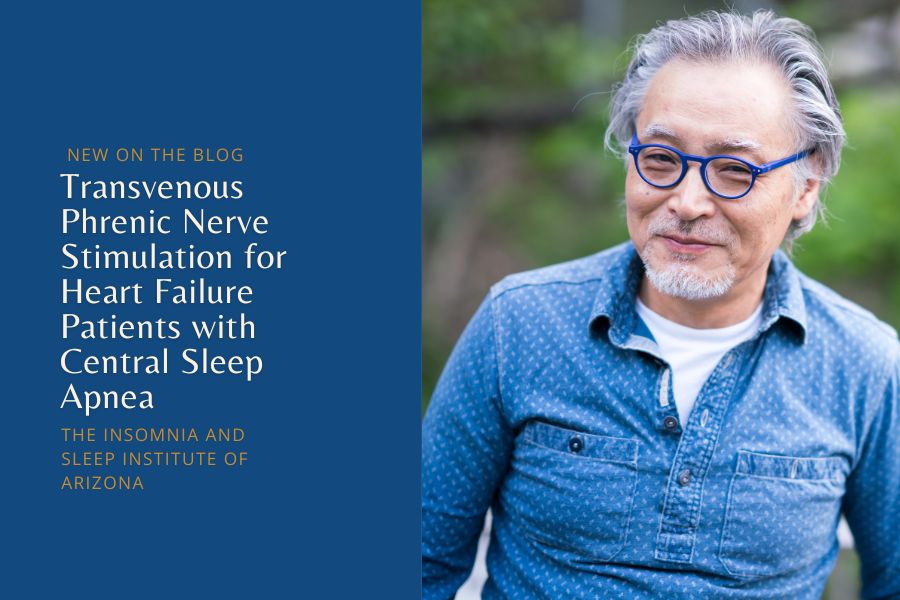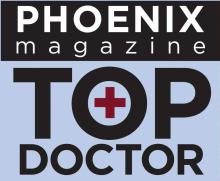When heart failure and sleep apnea collide, the search for effective treatment becomes even more pressing. Patients grappling with both conditions often face complex health challenges, making innovative solutions essential.
Transvenous phrenic nerve stimulation, FDA approved in October 2017, provides a breakthrough approach, specifically designed to stabilize and ensure constant breathing and alleviate the strain on the heart. It offers new hope for those managing these dual diagnoses.
What is Transvenous Phrenic Nerve Stimulation?
Transvenous Phrenic Nerve Stimulation (TPNS) is a new therapy that helps treat central sleep apnea (CSA). In CSA, the brain doesn’t send the right signals to the muscles that control breathing. This causes interruptions in breathing during sleep. Unlike obstructive sleep apnea (OSA), which happens due to blocked airways, CSA is a problem with brain signals. TPNS works to improve this communication and reduce apnea episodes.
This therapy is important for people with central sleep apnea related to heart failure. Heart failure can affect the respiratory system, causing more serious cases of sleep apnea. About 40% of heart failure patients also have central sleep apnea. This makes it an area where medical treatment is essential. The goal of this therapy is to lower the number of apnea episodes and improve oxygen levels. It also aims to help people sleep better.
How Transvenous Phrenic Nerve Stimulation Works
Transvenous phrenic nerve stimulation is a simple yet effective solution. Here’s how it works:
- Device Implantation: A small device, similar to a pacemaker, is implanted in the patient’s chest through surgery and a stimulation lead is inserted into one of two veins that lies parallel to the right or left phrenic nerve. This device sends electrical signals throughout the night via the stimulation lead to stimulate the phrenic nerve, which stimulates the diaphragm to stabilize breathing. It mimics the brain’s natural breathing signals, and thus when those signals fail due to central sleep apnea, the device continues to stimulate the phrenic nerve to maintain natural breathing.
- Breathing Regulation: After the implant is placed, it captures the phrenic nerve and constantly stimulates it at a pre-set respiratory rate. This rate is determined by monitoring the patient for six weeks prior to activation, ensuring the diaphragm consistently contracts, and delivering breaths at the person’s natural rate during sleep.
- Monitoring and Adjustment: The system can be monitored and adjusted through an external programming tablet. Physicians can fine-tune the settings to ensure the therapy is effective and comfortable for the patient.
Unlike traditional PAP (Positive Airway Pressure) machines, TPNS doesn’t require masks, making it more tolerable for many patients. The treatment has been shown to significantly reduce the number of apnea episodes.
Central Sleep Apnea and Heart Failure is A Dangerous Combination
Heart failure and central sleep apnea often occur together. And when they do, it creates a dangerous cycle. People with heart failure are already at a higher risk of poor oxygenation, and CSA only worsens this. During an apnea episode, the body experiences low oxygen levels (hypoxemia) and carbon dioxide retention. These periods of poor oxygenation place added stress on an already weakened heart.
But why is this so dangerous? Here’s what happens:
- Increased Strain on the Heart: Every apnea episode forces the body into a state of stress. The lack of oxygen signals the heart to work harder. This increases blood pressure and heart rate, placing extra strain on a heart that’s already struggling. Over time, this can worsen heart failure symptoms and even lead to further cardiovascular complications, such as arrhythmias.
- Reduced Sleep Quality: Heart failure patients already suffer from fatigue due to their condition, and CSA only adds to this burden. Frequent apneas interrupt the sleep cycle, preventing patients from reaching deep, restorative sleep stages. This not only impacts overall well-being but also diminishes heart function over time.
- Higher Mortality Risk: Statistics show that patients with heart failure and untreated CSA face a higher risk of mortality. In fact, some studies suggest that untreated CSA increases the risk of death in heart failure patients.
Transvenous Phrenic Nerve Stimulation for Central Sleep Apnea in Heart Failure Patients: The Study
The study titled “Phrenic nerve stimulation for the treatment of central sleep apnea in patients with heart failure” explores the effectiveness of this therapy. Conducted as a prospective and non-randomized trial. The researchers focused on monitoring the effect of PNS on key sleep parameters, including the apnea-hypopnea index (AHI) and oxygen saturation levels.
In this study, nine heart failure patients with CSA were treated using TPNS. A lead was placed into the right brachiocephalic vein and connected to a neurostimulator. This device stimulated the phrenic nerve to help control breathing during sleep. All the patients were monitored for two nights with polysomnography. This allowed for detailed observation of their breathing patterns.
Key Findings
The results of the study were promising:
- Significant reduction in AHI: The apnea-hypopnea index decreased significantly from 41 ± 18 events per hour to 29 ± 25 (p = 0.02). This shows that PNS substantially reduces the severity of sleep apnea in patients.
- Improved Oxygen Saturation: The mean arterial oxygen saturation (SaO2) increased from 93% to 95% (p = 0.03). Demonstrating that PNS helps improve oxygen levels during sleep.
- No significant change in ODI and SaO2 <90% (T90): The oxygen desaturation index (ODI) and time spent with oxygen saturation below 90% (T90) didn’t improve much. However, PNS still had a positive effect on overall oxygen levels.
This trial confirmed earlier findings that PNS therapy helps reduce the severity of CSA without the negative side effects of traditional therapies like PAP. It showed that patients with severe sleep apnea, having more than 30 events per hour, benefited the most. Their risk of mortality decreased as a result of PNS treatment.
Comparison with Traditional Therapies
Phrenic nerve stimulation offers a more natural breathing pattern by stimulating the diaphragm, unlike PAP devices. In heart failure patients, PAP can raise pressure in the chest, which can negatively affect heart function. This happens because it changes how the heart fills with blood and pumps it out. Studies like CANPAP, which looked at using CPAP for heart failure patients with CSA, found no clear benefit in reducing mortality.
In contrast, PNS works by stimulating the phrenic nerve, which helps the diaphragm move naturally. This allows the patient to maintain normal breathing patterns. Because of this, PNS doesn’t put the same pressure on the heart as PAP does. It’s a better option for heart failure patients with CSA.
Is Transvenous Phrenic Nerve Stimulation Right for You?
While TPNS has shown great promise, it is not the ideal treatment for everyone. Understanding whether phrenic nerve stimulation is suitable depends on a few key factors:
- Severity of Central Sleep Apnea: People with moderate to severe central sleep apnea (CSA), especially with an apnea-hypopnea index (AHI) over 30, tend to benefit more from transvenous phrenic nerve stimulation (TPNS). The study showed that those with the most severe CSA saw the biggest drop in AHI. They also had better oxygen levels during sleep.
- Heart Failure Condition: Heart failure patients often experience worsening CSA as their condition progresses. If CSA is exacerbating heart failure symptoms, TPNS may be a more effective treatment than traditional therapies like CPAP or BiPAP.
- Tolerance to Other Therapies: Many patients with CSA struggle with tolerating PAP devices due to discomfort or ineffectiveness. Transvenous phrenic nerve stimulation may be a better alternative, as it does not require the use of masks and is generally well-tolerated, with a high success rate in implantation.
- Long-Term Considerations: A study found that TPNS is safe and effective for heart failure patients, with 91% experiencing no serious side effects after 12 months. Patients who responded well also saw a lasting decrease in AHI and CSA severity. This suggests the potential for a better quality of life for those benefiting from the treatment.
However, as with any medical procedure, it’s important to consult a healthcare provider to determine if TPNS is the right treatment for your specific condition. Certain pre-existing conditions or implanted cardiac devices may pose challenges or complications during PNS implantation.
The Insomnia and Sleep Institute of Arizona: Experts in Treating Sleep Apnea
The Insomnia and Sleep Institute of Arizona offers treatments for all types of sleep apnea, including the innovative Remedē System, which uses transvenous phrenic nerve stimulation to treat central sleep apnea. Regardless of the cause of your CSA, our dedicated team of specialists is committed to finding the best solution for you. We are here to ensure you get the care you need for better sleep.
Ready to Take Control of Your Sleep?
If you’re experiencing symptoms of central sleep apnea now is the time to act. Schedule a consultation with us to learn more about phrenic nerve stimulation and other sleep apnea treatments. Let our team guide you toward a better night’s sleep and improved health. Reach our team.
References:
Khayat, R., Abraham, W., Patt, B., Brinkman, V., Wannemacher, J., Porter, K., & Jarjoura, D. (2012). Central Sleep Apnea is a Predictor of Cardiac Readmission in Hospitalized Patients With Systolic Heart Failure. Journal of Cardiac Failure, 18(7), 534–540. https://doi.org/10.1016/j.cardfail.2012.05.003
Sanchez, A. M., Germany, R., Lozier, M. R., Schweitzer, M. D., Semaan Kosseifi, & Anand, R. (2020). Central sleep apnea and atrial fibrillation: A review on pathophysiological mechanisms and therapeutic implications. IJC Heart & Vasculature, 30, 100527–100527. https://doi.org/10.1016/j.ijcha.2020.100527
Wang, Y., Schoebel, J., Han, J., Kraemer, J. F., Toncar, T., Siegert, J., Penzel, T., & Christoph Schöbel. (2022). Phrenic nerve stimulation for the treatment of central sleep apnea in patients with heart failure. Sleep and Breathing, 27(3), 1027–1032. https://doi.org/10.1007/s11325-022-02699-8
Disclaimer: The information provided is for educational purposes only and should not be considered medical advice. Consult a healthcare provider for personalized guidance.





